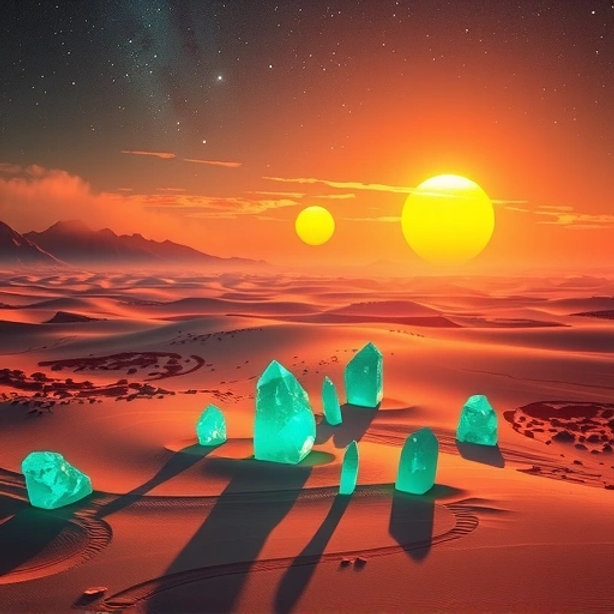
Learn 7 Simple Steps for Effective Midjourney AI Prompts
Apr 30
4 min read
0
0
0

Midjourney is a powerful AI tool that turns your text descriptions into amazing images. What you type, known as a prompt, is like giving instructions to the AI artist. The better your instructions, the better the picture you get back. Getting great results consistently requires a bit of structure in your prompts. Let's look at how to build prompts that work.
Why Good Prompt Structure Matters
Think about telling someone to draw something simple, like "image of a muscular kangaroo carrying a large gun." Without more details, the result might not be what you imagined. It could be messy or miss the feeling and look you wanted.
Having a clear way to write your prompts helps you tell the AI exactly what you want. This leads to more predictable and often much higher-quality images.
Your 7-Step Framework for Midjourney Prompts
Here is a simple way to break down your prompt writing process into distinct steps.
Step 1: Choose Your Image Type
Start by deciding what kind of image you want. Is it a photo, an illustration, a character sketch, a comic book panel, or maybe an anime style? Picking this first sets the overall mood and look.
Step 2: Identify the Main Subject
Clearly state the main focus of your image. Be specific. Instead of just "kangaroo," try "an anthropomorphic army kangaroo." Specificity helps the AI understand who or what is most important.
Step 3: Add Descriptive Details
Flesh out your subject with details. What are they wearing? What is their expression or mood? What action are they doing? Use words that describe appearance, action, and attitude.
Step 4: Set the Scene
[P]Put your subject into a place. Is it a
desert plain, the inside of a damaged spaceship, or a moody forest? The setting adds context and atmosphere to your image.[/P]
Building prompts like this step by step helps you control the final image, but creating many different scenes or variations can still take significant time. If you're looking to speed up your creative process when generating scenes and characters, automating some of the Midjourney tasks can be a huge help.
Step 5: Define the Art Style (Optional)
Want it to look like a specific art style? You can add that here. Think watercolor painting, pixel art, or even the style of a particular movie or artist.
Step 6: Use Negative Prompts (Optional)
This tells the AI what you do *not* want in the image. You add `--no` followed by the thing you want to avoid, like `--no humans` if you only want animals or objects.
Step 7: Set the Aspect Ratio
Tell Midjourney the shape of the image you want. Use `--ar` followed by the width and height, like `--ar 16:9` for a wide image or `--ar 2:3` for a tall portrait. This helps frame your scene correctly.
Getting Help with Prompts
Sometimes you hit a creative block or need ideas for describing a complex scene. Tools like ChatGPT can help. You can ask it to suggest descriptions or even structure a prompt for you based on your general idea. It's like using one AI to improve how you communicate with another AI.
Managing all these prompt elements, variations, and settings can feel like a lot, especially when creating many images. Tools designed to simplify this process exist. Learn how Midjourney automation tools can streamline your workflow.
Advanced Midjourney Techniques
Once you have the basics down, Midjourney offers tools to refine and expand your creations.
Experiment with Settings
Midjourney has various versions. You can change these in your settings panel. For example, switching to version Niji 6 can give you more of an illustration or anime feel. Playing with different versions changes the output and is worth exploring.
Keep Your Style Consistent
Have an image you like the look of? You can drag it into the style reference area. This tells Midjourney to try and match that image's style while you change the subject in your text prompt. It's a great way to create a series of images that all have a similar aesthetic.
Modify and Extend Your Images
Midjourney has built-in editor tools that let you make changes after the initial image is generated.
Outpainting (Extend Background)
If you love an image but want to see more of the scene outside its original borders, you can use the editor to extend it. Simply select the area or direction you want to add to and often just typing "extend background" or a short description will prompt the AI to generate more around your original image.
Inpainting (Vary Region)
Need to change a specific part of an image? The editor allows you to erase a section, like maybe a character's hat, and then type in your prompt panel what you want to replace it with, like "army hat." Midjourney will regenerate just that erased area.
Finish Your Art
Once you have an image you are happy with, you can choose to Upscale it for more detail or simply Download it to use right away.
Putting It All Together
Creating great AI art with Midjourney isn't just about typing words. It's about understanding how to structure your requests using steps like defining image type, subject, details, and setting, plus knowing when to use optional styles and negative prompts. Experimenting with settings and using the editor tools for outpainting and inpainting gives you even more control.
While learning these techniques helps you create stunning visuals, remember that scaling production or managing many ongoing projects can be demanding. Discover how the TitanXT Midjourney Automator tool can streamline your creative process and help you generate more art, faster.






